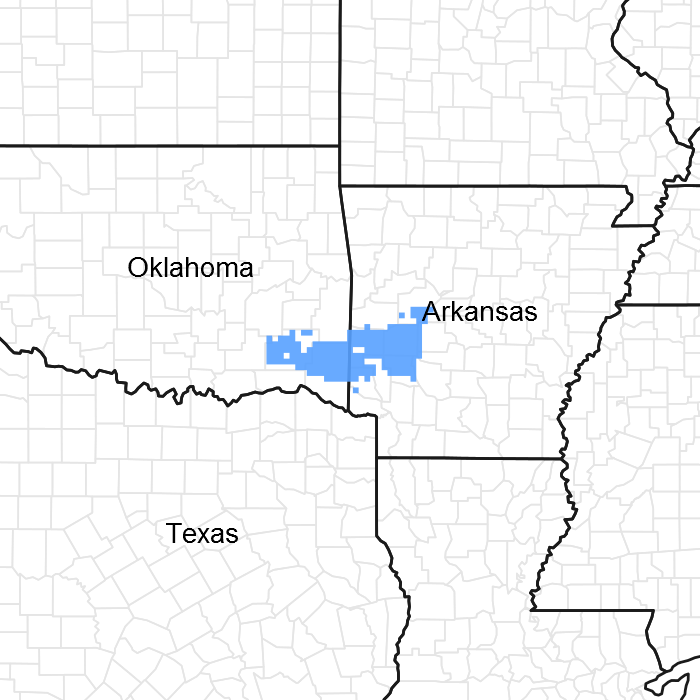
Natural Resources
Conservation Service
Ecological site F119XY005AR
Clayey Moderately Drained Upland
Accessed: 12/21/2025
General information
Provisional. A provisional ecological site description has undergone quality control and quality assurance review. It contains a working state and transition model and enough information to identify the ecological site.

Figure 1. Mapped extent
Areas shown in blue indicate the maximum mapped extent of this ecological site. Other ecological sites likely occur within the highlighted areas. It is also possible for this ecological site to occur outside of highlighted areas if detailed soil survey has not been completed or recently updated.
MLRA notes
Major Land Resource Area (MLRA): 119X–Ouachita Mountains
This ecological site is found in MLRA 119: Ouachita Mountains.
This area is in the Ouachita Mountains Section of the Ouachita Province of the Interior Highlands. The steep mountains are underlain by folded and faulted sedimentary and metamorphic rocks. Most of the stream valleys are narrow and have steep gradients, but wide terraces and flood plains border the Ouachita River in western Arkansas. Elevation ranges from 330 feet (100 meters) on the lowest valley floors to 2,625 feet (800 meters) on the highest mountain peaks. Local relief is generally 100 to 200 feet (30 to 60 meters), but it can exceed 980 feet (300 meters).
Classification relationships
Ozark-Ouachita Shortleaf Pine-Oak Forest and Woodland
Summary: This system represents forests and woodlands of the Ouachita and Ozark mountains region of Arkansas, adjacent Oklahoma, and southern Missouri in which Pinus echinata is an important or dominant component. Although examples of this system occur throughout this region, there is local variation in the extent to which they were present. For example, in the Ozark Highlands, this system was historically prominent only in the southeastern part where sandstone-derived soils were common, and in the southern part on soils derived from chert, being excluded from or diminished in other areas by non-conducive soils. In contrast, pine was virtually ubiquitous in the historical forests of the Ouachitas. In nearly all cases (at least in the Ouachitas), Pinus echinata occurs with a variable mixture of hardwood species. The exact composition of the hardwoods is much more closely related to aspect and topographic factors than is the pine component. In some examples of this system, the aggregate importance of hardwoods may be greater than pine, especially on subxeric and mesic sites.
Ecological site concept
This site is a woodland on less than 15 percent slopes in the uplands with udic moisture and thermic temperature regimes. It has moderately drained clayey soils with greater than 3 inches of Available water.
Table 1. Dominant plant species
| Tree |
(1) Quercus alba |
|---|---|
| Shrub |
Not specified |
| Herbaceous |
(1) Vaccinium |
Click on box and path labels to scroll to the respective text.

